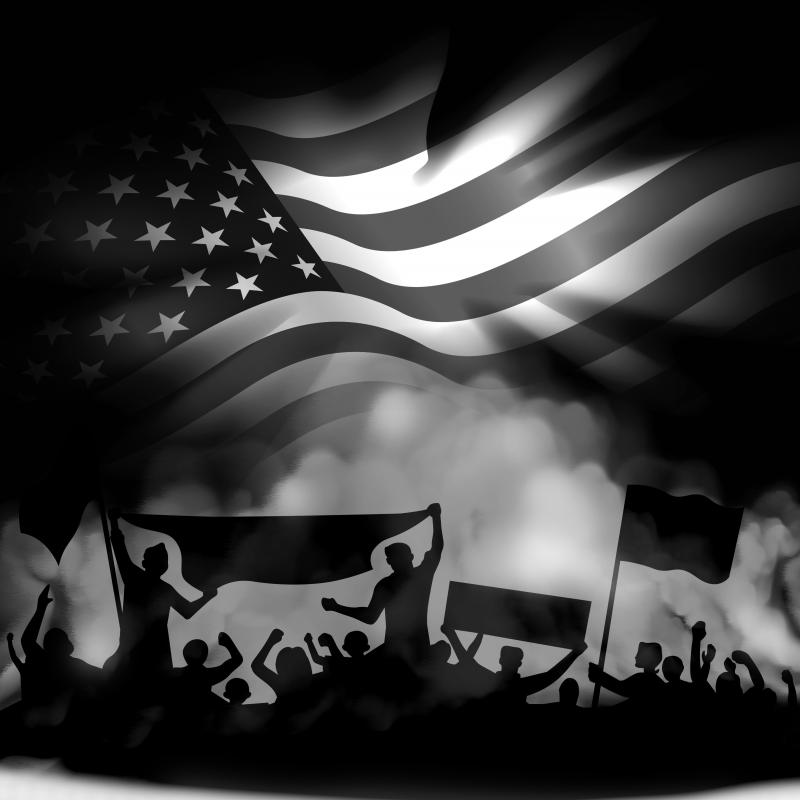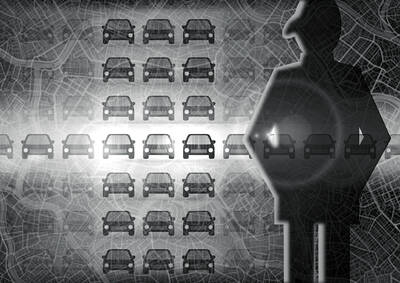Many New Yorkers had their fill of New York Governor Andrew Cuomo’s daily COVID-19 briefings some time ago; they had gone from inspiring to frustrating as New York City’s lockdown entered its fourth month. However, earlier this week, after horrific nights of protests and rubber bullets, looting and vandalism, Cuomo said something that has not been said nearly enough by government leaders: “Don’t snatch defeat from the jaws of victory.”
He continued: “We’re talking about reopening in one week in New York City, and now we’re seeing these mass gatherings over the past several nights that could in fact exacerbate the COVID-19 spread. We spent all this time closed down, locked down, masks, socially distanced, and then you turn on the TV and you see these mass gathering that could potentially be infecting hundreds and hundreds of people. After everything we have done. We have to take a minute and ask what are we doing here? What are we trying to accomplish?”
After making it clear that he strongly believed that the protesters’ cause was just — and urging them to channel their anger into an agenda for change — he returned to the pandemic. His anguish was palpable.

Illustration: June Hsu
He said: “We just spent 93 days limiting behavior, no school, no business, thousands of small businesses destroyed. People will have lost their jobs. People wiped out their savings. And now, mass gatherings, with thousands of people, in close proximity... How many superspreaders were in that crowd? ... How many young people went home, kissed their mother hello ... and spread the virus?”
“We have to be smart,” he repeated as he ended his remarks. “We have to be smart right now.”
Ever since the protests began last week, the pandemic has gone from being the biggest crisis in the US since Sept. 11, 2001, to almost an afterthought, overshadowed by the urgency and importance of taking to the streets in the aftermath of the death of George Floyd in police custody in Minneapolis.
For instance, Axios reported that on Sunday last week that MSNBC, CNN and Fox News devoted 25 percent of their combined airtime to the protests — and only 2.5 percent to the coronavirus.
Nate Silver of FiveThirtyEight asked on Twitter what it would mean for social distancing now that the news media “and other elites” were playing down the virus.
People already know the answer to that: Although many of the protesters are still wearing masks, many are not. As for the critical need to stand 6 feet (1.8m) apart to avoid infecting others, well, that has been abandoned.
What is more, it is well documented that the virus is spread through respiratory droplets that are expelled when an infected person coughs, yells or even talks. Protesters yell. They scream when police spray them with pepper spray or tear gas.
The public health experts who were so quick to condemn right-wing protesters for endangering the public with their behavior have largely been silent in the face of these much more widespread — and, from a pandemic standpoint, more dangerous — protests.
National Public Radio reported that dozens of health experts had signed an open letter supporting the protests.
“White supremacy is a lethal public health issue that predates and contributes to COVID-19,” they wrote. Be that as it may, the virus does not care whether the protesters are white supremacists or progressives.
During the pandemic of 1918, people often died in 12 to 24 hours after being infected. The suddenness of death made the pandemic impossible to ignore. This virus is not like that.
It is less potent than the so-called Spanish flu, and symptoms do not appear for a week or so after infection. Many people never have symptoms at all.
It is much easier to ignore, or soft-pedal, in the heat of the moment. To the country’s detriment, that is exactly what has been happening.
So where does that leave the US? First, it most likely means that just when many cities, including hard-hit New York, were finally getting the virus under control and beginning to reopen, there would be a new outbreak of infections.
Second, there is a decent chance that the reopenings — which many have been awaiting so eagerly — would suffer a significant setback.
Consider contact tracing. As the number of positive cases dwindle, the idea is the government could trace those with whom a newly infected person has been in contact and quarantine them, allowing the uninfected to return to work or otherwise go about their lives.
The protests make contact tracing virtually impossible. That, in turn, increases that likelihood of widespread infections once cities reopen.
Consider all those hundreds of thousands of small storefront businesses that have been closed because of the lockdowns. For many of them, the vandalism that has taken place would make it even harder to reopen because their windows have been broken and their inventory stolen.
Once the number of positive cases begin rising again, would restaurants still be able to open, even at 50 percent capacity? Would employees be able to return to the office? Would people be able to go to gyms? Would the US be right back where it was in mid-March? Would Cuomo have to reverse himself and, painfully, shut down New York City again?
A number of economists have devised what could be called reopening models — calculations about how to maximize the ability to revive the economy while minimizing the possibility of further COVID-19 deaths.
The most persuasive paper was written by a team led by James Stock, a Harvard economist and coauthored by David Baqaee, Emmanuel Farhi and Michael Mina.
“Our view is that it is possible to get people back to work, and get them shopping and avoid a resurgence in escalating deaths so long as there is some contact tracing,” they wrote. “It is also contingent on a high degree of discipline in their nonwork lives. If people have parties that are small and outdoors, then yes, you can open the economy. But if you continue your nonwork life the way it was before, that completely swamps the contacts you make in the office. Those contacts are relatively safe. It is the out-of-work stuff that kills you.”
Of course, the out-of-work stuff is exactly what has been taking place on the streets of just about every large city this past week.
When asked whether he thought the protests negated his work, Stock said no. He thought the protesters were aware enough of the virus that if they came down with symptoms they would know enough to get tested and to self-isolate.
He also said he was hopeful that because the protests took place outdoors, the nation might avoid a second wave.
However, there is a big difference between having a small party outdoors and joining thousands of others, in close quarters, to protest for social justice.
In my neighborhood in New York, people are still stepping onto their balconies every evening at 7pm to bang pots and pans in honor of the healthcare workers who have put their lives on the line to fight the pandemic.
Hundreds of them — doctors and nurses, and other essential workers, like meatpackers and delivery people — have lost their lives to the virus.
Not since the 2012 Sandy Hook Elementary School shooting in Newton, Connecticut, has the US been as galvanized by a killing as it has been by George Floyd’s death.
I am not discounting the importance of this moment, or the possibility that it could bring about important and lasting change, but if the protests lead to a new wave of the pandemic and set the country back on reopening, would the lives of those essential workers have been lost in vain?
Joe Nocera is a Bloomberg Opinion columnist covering business. He has written business columns for Esquire, GQ and the New York Times, and is the former editorial director of Fortune. His latest project is the Bloomberg-Wondery podcast “The Shrink Next Door.”
This column does not necessarily reflect the opinion of the editorial board or Bloomberg LP and its owners.
Concerns that the US might abandon Taiwan are often overstated. While US President Donald Trump’s handling of Ukraine raised unease in Taiwan, it is crucial to recognize that Taiwan is not Ukraine. Under Trump, the US views Ukraine largely as a European problem, whereas the Indo-Pacific region remains its primary geopolitical focus. Taipei holds immense strategic value for Washington and is unlikely to be treated as a bargaining chip in US-China relations. Trump’s vision of “making America great again” would be directly undermined by any move to abandon Taiwan. Despite the rhetoric of “America First,” the Trump administration understands the necessity of

If you had a vision of the future where China did not dominate the global car industry, you can kiss those dreams goodbye. That is because US President Donald Trump’s promised 25 percent tariff on auto imports takes an ax to the only bits of the emerging electric vehicle (EV) supply chain that are not already dominated by Beijing. The biggest losers when the levies take effect this week would be Japan and South Korea. They account for one-third of the cars imported into the US, and as much as two-thirds of those imported from outside North America. (Mexico and Canada, while

US President Donald Trump’s challenge to domestic American economic-political priorities, and abroad to the global balance of power, are not a threat to the security of Taiwan. Trump’s success can go far to contain the real threat — the Chinese Communist Party’s (CCP) surge to hegemony — while offering expanded defensive opportunities for Taiwan. In a stunning affirmation of the CCP policy of “forceful reunification,” an obscene euphemism for the invasion of Taiwan and the destruction of its democracy, on March 13, 2024, the People’s Liberation Army’s (PLA) used Chinese social media platforms to show the first-time linkage of three new
I have heard people equate the government’s stance on resisting forced unification with China or the conditional reinstatement of the military court system with the rise of the Nazis before World War II. The comparison is absurd. There is no meaningful parallel between the government and Nazi Germany, nor does such a mindset exist within the general public in Taiwan. It is important to remember that the German public bore some responsibility for the horrors of the Holocaust. Post-World War II Germany’s transitional justice efforts were rooted in a national reckoning and introspection. Many Jews were sent to concentration camps not